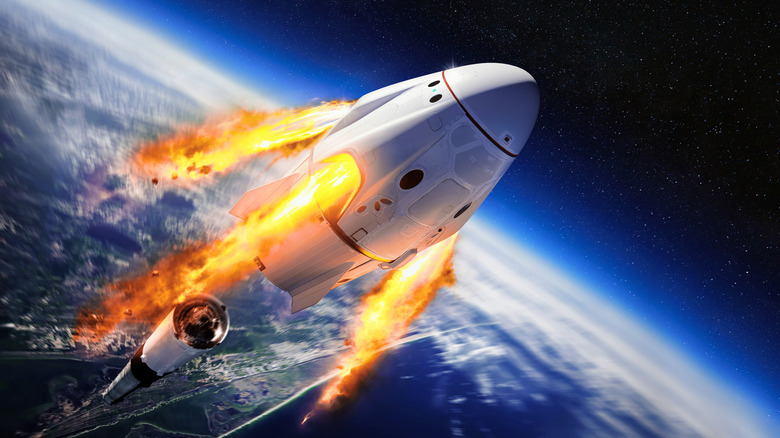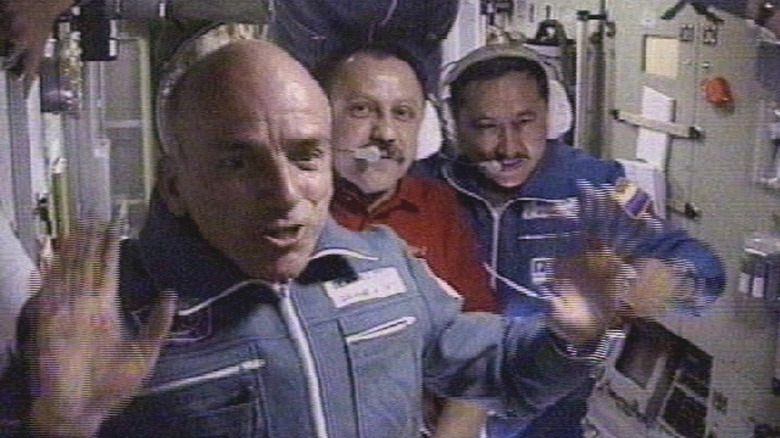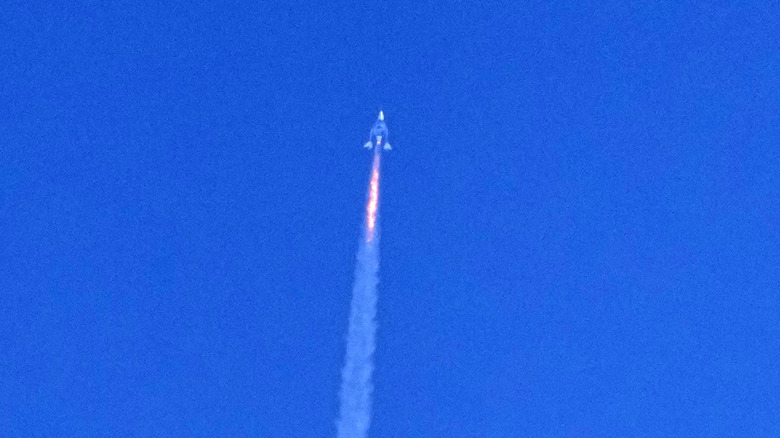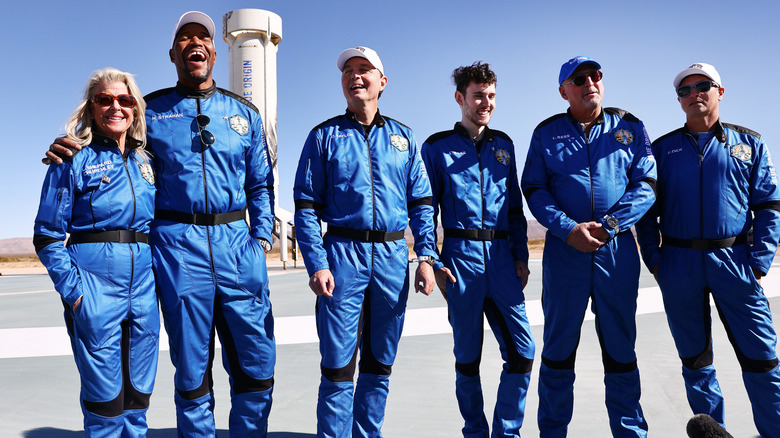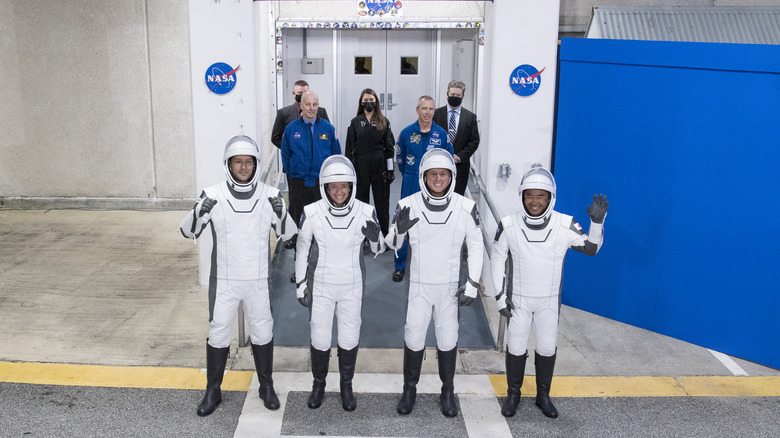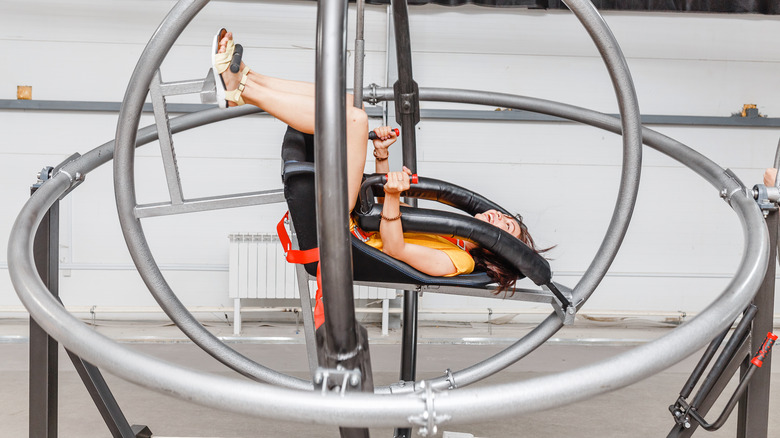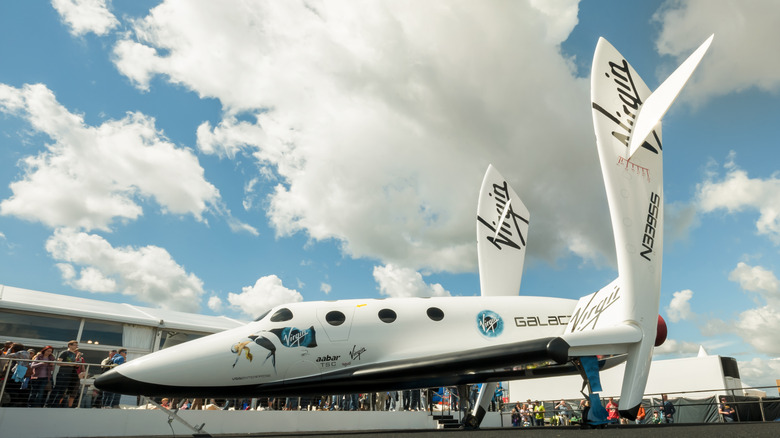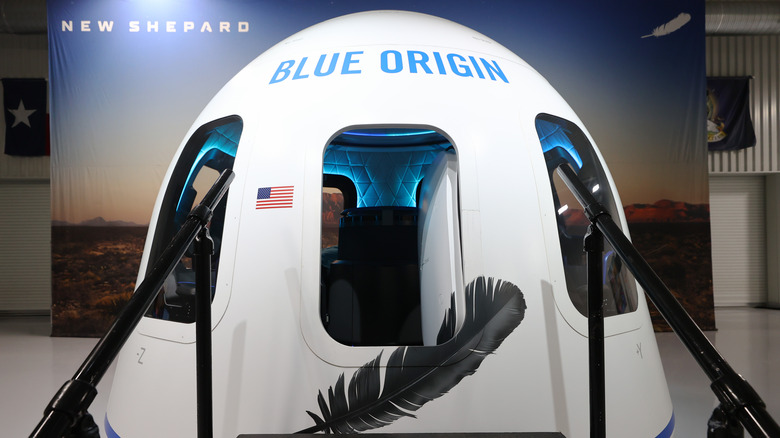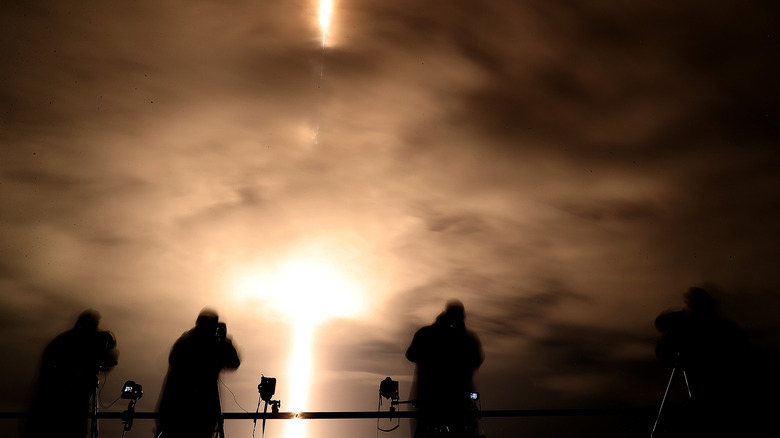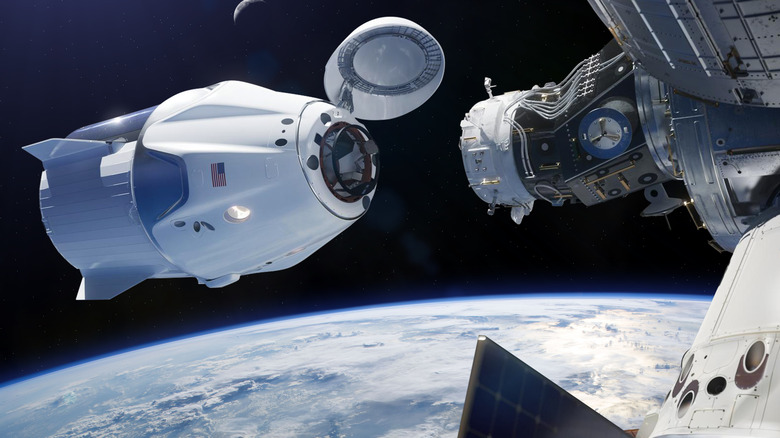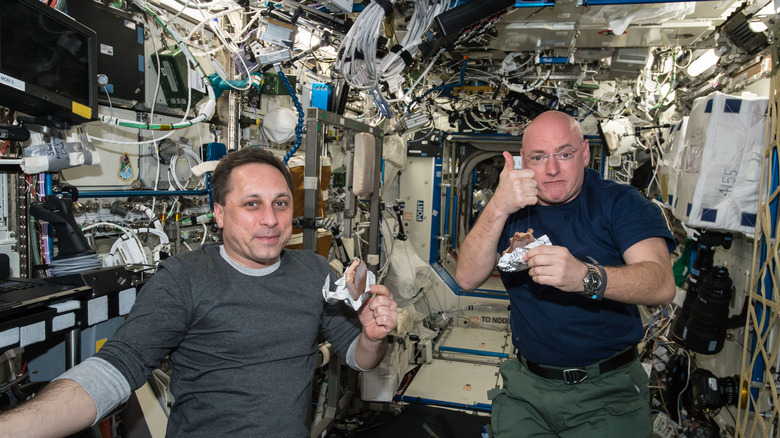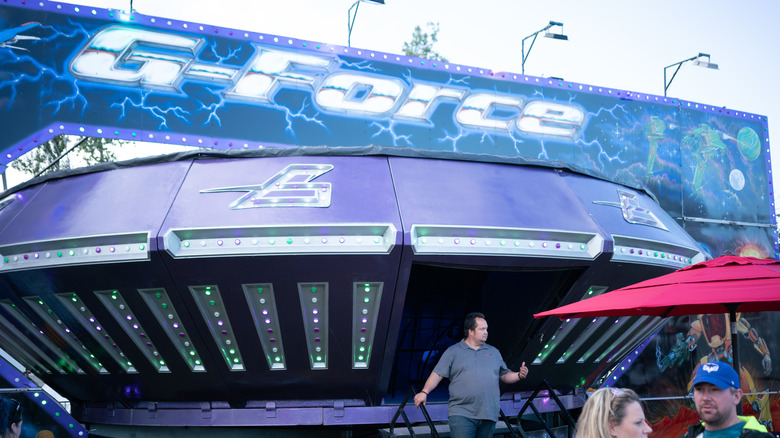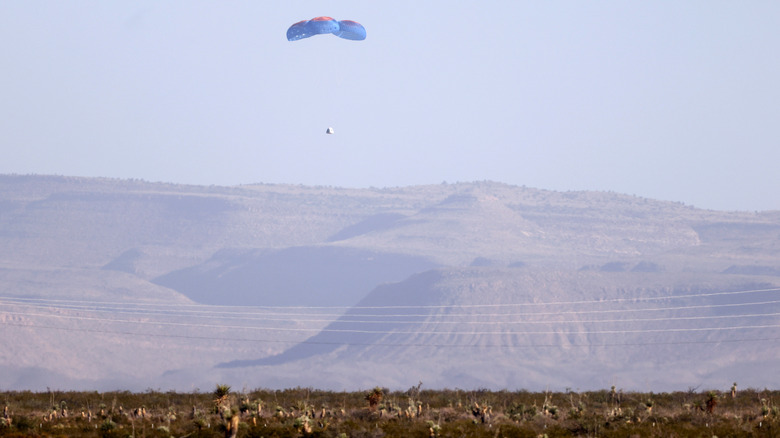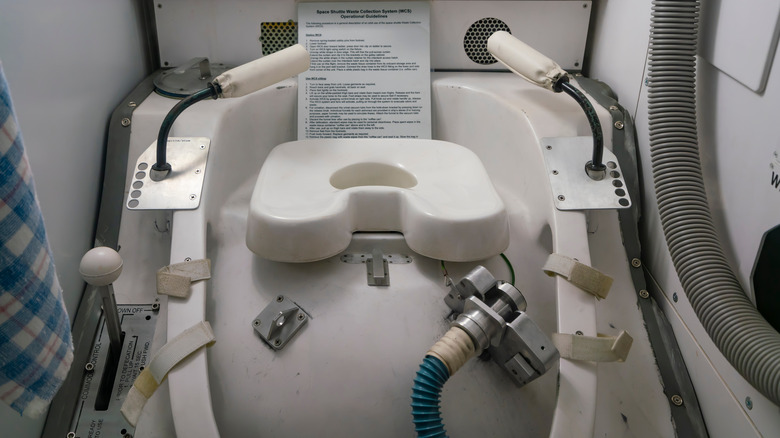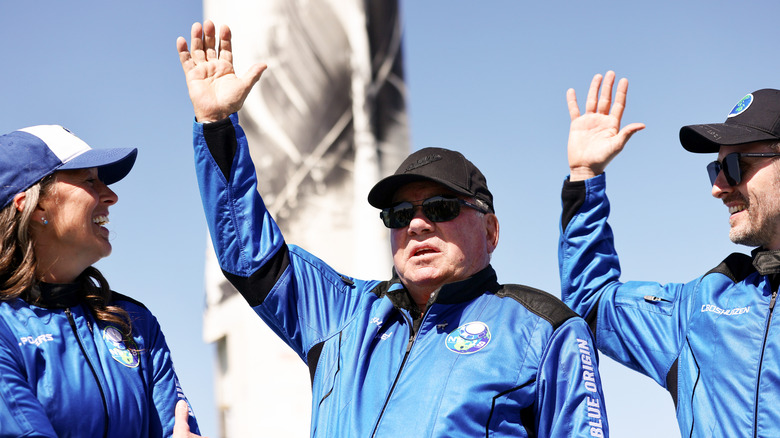The Truth About Space Tourism
Ever dream about going to space?
If you have, then you share the dream of millions of people worldwide. One recent poll by ValuePenguin shows that 49% of Americans want to go to space. Heck, this dream is so serious among Gen-Zers that 28% would rather take the trip into space than getting rid of all their debt. Yet space ambitions come with caveats. The same poll shows that only 19% of respondents would crack open their wallets and pay $100,000 for such a trip. Also, a poll by Axios revealed space ambitions may be limited in scope. A majority of respondents (61%) wouldn't go to the moon even if money was no object. Admittedly, this opinion is skewed to the older demographic since over half of respondents between 18 and 34 said they'd love to go to the moon.
The desire to go to space is a dream that has in fact become a reality for a certain high-earning demographic. Space tourism is now a thing. And the truth is it is not like taking the red eye to Las Vegas, but full of surprises that most people may not realize. So let's put on our g-suits, power up our warp drives, and go to where some few have gone before.
It is older than you think
Headlines around the world proclaimed 2021 as a milestone in space tourism. Forbes, for example, cited the numerous companies that launched their first tourists into orbit, starting with Sir Richard Branson's Virgin Galactic making a successful flight on July 11, followed by Jeff Bezos's Blue Origin nine days later. Elon Musk's SpaceX followed suit on September 15. The truth is that these flights were not the first space tourism excursions.
For many years, individuals sought out governments with space programs and paid them oodles of money so that they could fulfill their space camp dreams. The first occurred in 2001 when, according to Britannica, the American businessman Dennis Tito paid $20 million to go on a Russian Soyuz TM-32 to stay for a week aboard the International Space Station. Back then, the space programs demanded that Tito train as an astronaut (cosmonaut) and as a result, Tito disdained the phrase "space tourist," preferring "spaceflight participant." Yet that cannot change the popular, and correct, notion that he was indeed history's first space tourist. Since that time, a variety of business magnates have opened their wallets for the experience.
There are two types of space tourism
The truth is that there are actually two types of space tourism: suborbital and orbital. While not quite the difference between business and coach, they do provide different experiences.
Suborbital trips as described by CNBC are ascents to the very border of space. The main competitors here are Blue Origin and Virgin Galactic which go about the business in different ways. Virgin Galactic takes its customers up in a shuttle attached to an aircraft that rises to 40,000 feet where it detaches. The shuttle fires rockets to climb up to 295,000 feet. Blue Origin uses rockets from the ground for a straight up ascent of 330,000 feet. In both cases, passengers can float in microgravity for a few minutes before coming down.
Orbital flights on the other hand take you, well, into orbit. The spacecraft, launched by rockets, reaches an altitude of about 1.5 million feet from the surface. As related by Space.com, SpaceX achieved this in September 2021 in an inaugural commercial mission. On this particular trip, billionaire Jared Isaacman (who commanded the mission, being a pilot) chartered the flight and gave three seats away as a fundraiser to support St. Jude Children's Research Hospital. After being in orbit for three days, the capsule reentered the atmosphere and splashed down off the coast of Florida.
It is even more expensive than you think
By following the laws of supply and demand, it is clear that tourist trips to space are in high demand. That — with high overhead — makes tickets even more expensive than you might think. New Scientist took a look at how space tourism can impact one's pocketbook. A ride on Virgin Galactic's SpaceShipTwo will run about $450,000 per ticket. So you can either buy a pretty nice house or go to space for an hour. The multi-day orbital trips run by SpaceX are naturally going to be more expensive and run about $50 million.
But the truth is that not everybody has to pay for a ticket. As mentioned, some have gone as part of a fundraiser. But if you are high profile enough, you might get a free ride. USAToday highlighted how former professional football player and host of "Good Morning America" Michael Strahan went up on Blue Origin's third suborbital tourist flight in December 2021. Strahan was preceded by arguably the one person most ready to go to space. Time and numerous outlets covered William Shatner's ascent that October, also with Blue Origin. The 90-year-old actor later said to Time, "I was so besotted by what happened on that flight. It moved me to tears, so much so that ... I couldn't control my emotions for 15 to 20 minutes."
It is believed that space tourism will become less exclusive
So if shooting to the stars is so expensive, will average citizens ever be able to live out their intergalactic dreams? Emergen Research reports that the space tourism industry is expected to grow robustly in the coming years. This will likely bring more competition, and ticket prices are likely to go down.
There are historical examples of this. According to Business Insider, the very first commercial flight in 1914 cost $400 — which equates to over $11,000 in 2022 dollars when adjusted for inflation. Of course, there were some differences then. CNN interviewed Laura Forczyk, the principal of Astralytical, a consulting firm for space-related matters. She stated, "Early planes carried very few people. Imagine what air fares would be like if they still only carried a few."
So how do you mass market space travel? Analysts suggest that space tourism needs to be practically useful and hooked into the transportation network. This is being explored by Virgin Galactic who thinks space travel can cut down the trip from New York to Tokyo to just a few hours. So how long will it be before you can hop the redeye to the Moon? Don't hold your breath, since there is no conceivable timeframe. But given a decade (or a few), space tourism may be affordable to even millionaires.
You don't need to have the physique of an astronaut
Aforetime, if you wanted to blast off into space for NASA, you would need to go through rigorous physical and technical training. This includes simulating weightlessness for hours at the bottom of a 40-foot-deep pool. Travel + Leisure notes that space tourists do not need to do all that since they are passive passengers. In fact, for suborbital flights, the physical training is quite minimal, lasting only a few days at most. This might include training in a spinning machine whose centrifugal forces are meant to simulate the g-forces of launch. It is also recommended to scuba dive in order to experience the quasi-weightlessness of neutral buoyancy.
Orbital trips may require more elaborate preparation, however. The U.K.'s National News reported that Orbite Astronaut Orientation is creating a chain of locations to train the 21st century's space tourists. In their itinerary, after an arrival with a champagne reception and VIP dinner, you would experience g-forces in aircraft, VR simulations, and a high altitude flight that simulates some weightlessness. Prices start at $15,000 for the two-to-three day experience.
If you die in space, nobody will know what to do
So what happens if you become a space tourist, you get up into orbit, and then you croak? The truth is a bit uncertain. Phys.org reported on the issue noting that there is no existing precedent for what happens if a space tourist dies while on the ride. Yet with minimal training and preflight screening it is not a matter of if a space tourist dies, but when. International law stipulates that governmental agencies regulate the activities of commercial space flights. Thus, for the United States this would be the Federal Aviation Administration. This may mean that a company's license is suspended pending an investigation. However, it is unclear as to what may happen since it hasn't occurred yet. The type of death may dictate the terms of the investigation and actions taken by a regulatory body. For example, there is a big difference if a space tourist died from a heart attack versus a mechanical failure of the vessel.
This line of thought brings in a host of other moral and legal issues which will necessarily arise as humans go to space more and more. What do you do with bodies on long missions? Can they be committed to space like a sailor's body can be committed to the sea? The list of scenarios will continue to grow.
There are enough space tourists going up that it is becoming mundane
Even with space tourist flights being only accessible for the 1% of the 1%, there are enough people shooting up into space that it is becoming less special. The New York Times reported that by the end of 2021, just over 600 people in total have been to space. However, with the expansion of space tourism, the sad truth is that this will become like tracking how many people have ever flown on a plane.
One sure portent of the dulling of space travel is from the Federal Aviation Administration (FAA). The agency in 2004 had initiated an Astronaut's Wings program which gave out Commercial Space Astronaut Wings in order to promote the space industry by recognizing those who went to space. In December 2021, the FAA discontinued the program. Associate administrator Wayne Monteith stated, "The Astronaut Wings program, created in 2004, served its original purpose to bring additional attention to this exciting endeavor. Now it's time to offer recognition to a larger group of adventurers daring to go to space." The FAA, however, will continue to maintain the list on its website.
It will further pollute the environment
One long-standing aspect of going to space is to conduct scientific research. The number of experiments done in space is considerable, and NASA highlights some of the more prominent ones that have been conducted over the last two decades at the International Space Station (ISS). From Alzheimer's research to matter experiments to 3D printing, these scientific investigations can fundamentally improve our lives on Earth.
So with potentially so many people going off to space, does this mean improving things planet-side?
The truth is that launching more rockets into space is about as unfriendly to the environment as Romulans are to Vulcans. The Conversation cites that a space rocket emits more than 100 times the carbon dioxide per passenger than an airplane flight. If these companies start launching more flights (as they have planned), the impact could be disastrous. While the New York Times reports that the full scope of potential impacts for an enlarged industry are still being studied, critics contend that the capital and energy of sending people on joyrides to micro- or zero gravity could be better spent cleaning up our own environmental messes.
Space tourists don't provide the most revenue to space tourism companies
Admittedly, launching spacecraft into orbit and sub-orbit is an expensive proposition, which explains in part why the ticket prices cost more than an average house. Innately, however, one would think that the profits generated by such prices would recoup the overhead. The truth of the matter is that much of the revenue for these companies comes from other sources. For example, Business Insider reported that in 2021, SpaceX was awarded two contracts totaling $159.7 million by the Pentagon to use its Falcon 9 rockets to launch military craft. SpaceX's main revenue stream, aside from contracts, is, according to the LA Business Journal, mainly from satellite launching services. For example, the company charges a minimum of $1 million to launch a 440 pound satellite.
Fortune details how Virgin Galactic has held contracts with NASA to haul payloads for the space agency into sub-orbit. CNBC announced how in December 2021, Blue Origin was awarded another contract by NASA to the tune of $130 million to develop private space stations. This line of business, where private contractors assist governmental agencies in space development, seems to be growing with others, such as Axiom and United Launch Alliance, getting into the game. What this means is that tourism will likely not be confined to a single or small group of companies as peripheral industries start to spring up about it.
It will probably not feature haute cuisine
With space travel only accessible to those who would be used to luxury, it would not be inappropriate to assume that the client base might be expecting, if not Crème de la Crème Pomme Frites, then at least a Kobe hamburger. However, foie gras cannot necessarily trump the fundamental laws of physics.
Zero gravity provides a limited menu, mainly freeze-dried or in liquid formats. NASA explains that astronauts don't spice their food with liquid pepper because it is good, but because there is fear that the tiny particles floating in zero gravity will clog an air vent or get into machinery. However, the reality of the situation doesn't prevent some from speculating as to the potential for, if not fine dining, then better eating in space. Forbes reported that specially designed coffee mugs that rely on surface tension might provide an analogous experience to having a morning coffee. Special types of beer bottles which are designed to overcome carbonation problems in microgravity (the bubbles stick together) are in development. Even NASA is in on the action, researching how to grow fresh vegetables in space. So maybe there is some hope for space cuisine, which would improve the morale of all hands while in orbit.
It will likely not be as physically strenuous as you think
When a space rocket leaves or returns to earth, those inside are subjected to g-forces caused by massive acceleration that essentially crush the person. Think, for example, of the common carnival ride called the Gravitron. According to NASA, the centrifugal forces of the ride make the riders experience three g's of force, or three times the normal force of gravity.
In the history of space exploration, early explorers were subjected to high amounts of g-force. According to Space.com, the Russian Cosmonaut Yuri Gagarin experienced up to eight g's on his reentry into Earth's atmosphere. Alan Shepard, the first American in space, experienced six.
Travel + Leisure reports that most space tourists will experience the g-forces of a Gravitron. This may mean that some people may experience some dizziness and nausea. Since nothing more would be expected of you than to enjoy the ride, the best advice is just to relax. This does not mean, however, you should not prepare at all. Physical and mental fitness are important especially when your body is entering a situation entirely alien to it. Getting used to weightlessness takes some time, and you may get banged about as you get used to a gravity-free environment.
Shuttles are better than rockets for smooth landings
While it is a no-brainer to assume flying to outer space will be bumpier than taking a jumbo jet cross country, there is a difference of how bumpy or smooth landings are depending on which carrier you choose to go to space with. As Travel + Leisure describes, there are two ways of coming down — by capsule or by winged shuttle. Shuttles are offered by Virgin Galactic which provide, as detailed by USAToday, a much smoother landing on a runway rather than plopping into the ocean or on the ground in a capsule — albeit softened with parachutes. Capsules are employed by SpaceX and Blue Origin since they use rockets to get into orbit. Anybody who decides to do an orbital trip will thus have to suffer a bit more jostling.
But the truth is that how you land is based on what you are looking for. If you are looking for smoothness, go with Virgin Galactic. If you are looking for a bit more authenticity, as if you were astronauts in the Mercury and Apollo programs, then go with a capsule.
It can get messy ... very messy
Perennially, astronauts are often asked how they use the loo in space. The answer is: very carefully. Crumbs, dust, and bits of fingernails which float through the wrong air duct or sail into the wrong microprocessor could spell disaster. One could imagine the implications if a toilet goes kaput while in flight. What to do with human waste while in space was a very important question at the dawn of spaceflight. On the Apollo 10 mission, which orbited the moon, some human waste got loose. According to the declassified transcript of the mission (provided by NASA) there were a number of poop quips such as, "First crap around the sun" and "the first free crap in space." Even when the fecal crisis was seemingly over, the mission commander, Thomas Stafford, said, "Give me a napkin quick. There's a turd floating through the air." To this one of other astronauts replied, "I didn't do it. It ain't one of mine." Stafford then commented, "Mine was a little more sticky than that. Throw that away."
Typically, human waste is contained through toilets containing fans to create suction. One incident of space toilets going awry was reported by CNN. During the inaugural launch of the Inspiration4 aboard the Crew Dragon capsule, an alarm sounded, indicating a serious problem. But in this case it was the toilet. The truth is space tourists should be ready to be as constrained as astronauts in maintaining the hygiene of their spacecraft.
If you are lucky, you will experience the overview effect
The truth is that many, if not most people, who want to travel to space long to do so for the so-called "overview effect." Space Center Houston describes this phenomena as how one's perspective changes in a profound way by looking at our small planet from a distance. It informs humans of just how small and fragile the Earth is. Just how moving the experience can be is shown by William Shatner's reaction to the Blue Origin flight. Forbes transcribed everything the awed actor said to Jeff Bezos when he thanked him for "the most profound experience I can imagine." Shatner also said, "What I would love to do is to communicate as much as possible the jeopardy, the moment you see how ... the vulnerability of everything — it's so small! This air which is keeping us alive is thinner than your skin! It's a sliver, it's immeasurably small when you think in terms of the universe. It's negligible, this air."
This seems to be one of the main hopes for the future of space tourism. Despite its flaws and elitism, it is a way for more people can gain a perspective on our fragile world.
